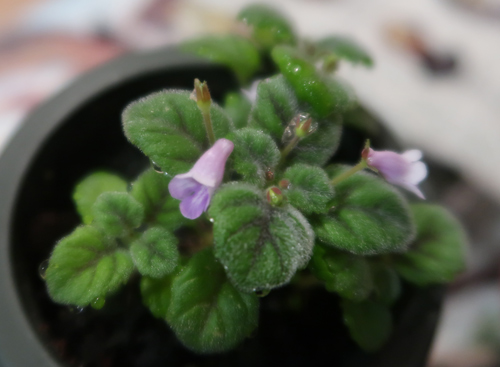
This plant is grown by Hung Nguyen. It bloomed from seed in about five months. Photo January 2018.
This species was discovered in Pará state. This state is in northern Brazil, far from most other members of the Sinningia alliance, which are found mainly in the southern part of the country. Pará state includes the mouth of the Amazon river, and is the second largest state in Brazil. The Serra dos Carajás, where Sinningia minima was discovered, is a mountain range in southeastern Pará. This range is home to a lot of mining, especially iron, but also other metals. Such activity could endanger the habitat of this new species.
Sinningia minima was found on iron-bearing rock. Whether this means it won't grow well without iron in its soil has yet to be determined. So far, it appears to grow fine in normal potting mix.
Although other gesneriads (such as drymonias) are found in Pará state, this species is the only representative of the sinningia alliance found there so far. The Gesneriad Checklist does not show any sinningias, paliavanas, or vanhoutteas in Pará. This means that Sinningia minima is isolated, far from its nearest relatives.
According to the publication of this species (see link below), the corolla is shorter than those of the other micro species, and also has a different shape. Instead of the narrow tube with flaring lobes, this species has a wider cup-shaped tube, also with flaring lobes. The color pattern is different too. The base color is "lilac", a sort of pastel purple. The lobe margins have this color, while the central area toward the throat of the tube is white. This species shares with Sinningia concinna the presence of dots in the corolla throat, a feature absent from Sinningia pusilla and Sinningia muscicola. Compared to those of Sinningia concinna, the dots of Sinningia minima are larger, fewer, and more reddish.